

Want to make costly marketing errors and waste time and resources? Start without a marketing plan.
A marketing plan is not only an essential part of your business plan, but it is the roadmap that will provide your team focus and direction in all their marketing efforts.
A good marketing plan is backed by research and facts. Below, we’ve covered the steps you need to follow when creating a marketing plan that will help you attract potential customers to your product and services and convince them to buy.
Pricing, promoting and creating brand messages, all depend on your current market and your position in it.
When understanding your current market position, there are a few things that you need to look into;
This is where you look into the strengths, weaknesses, opportunities, and threats associated with your product.
With your team and a SWOT analysis, this will take only a few hours. Once you understand your product in terms of these four areas, it’ll be easier to understand your market position.
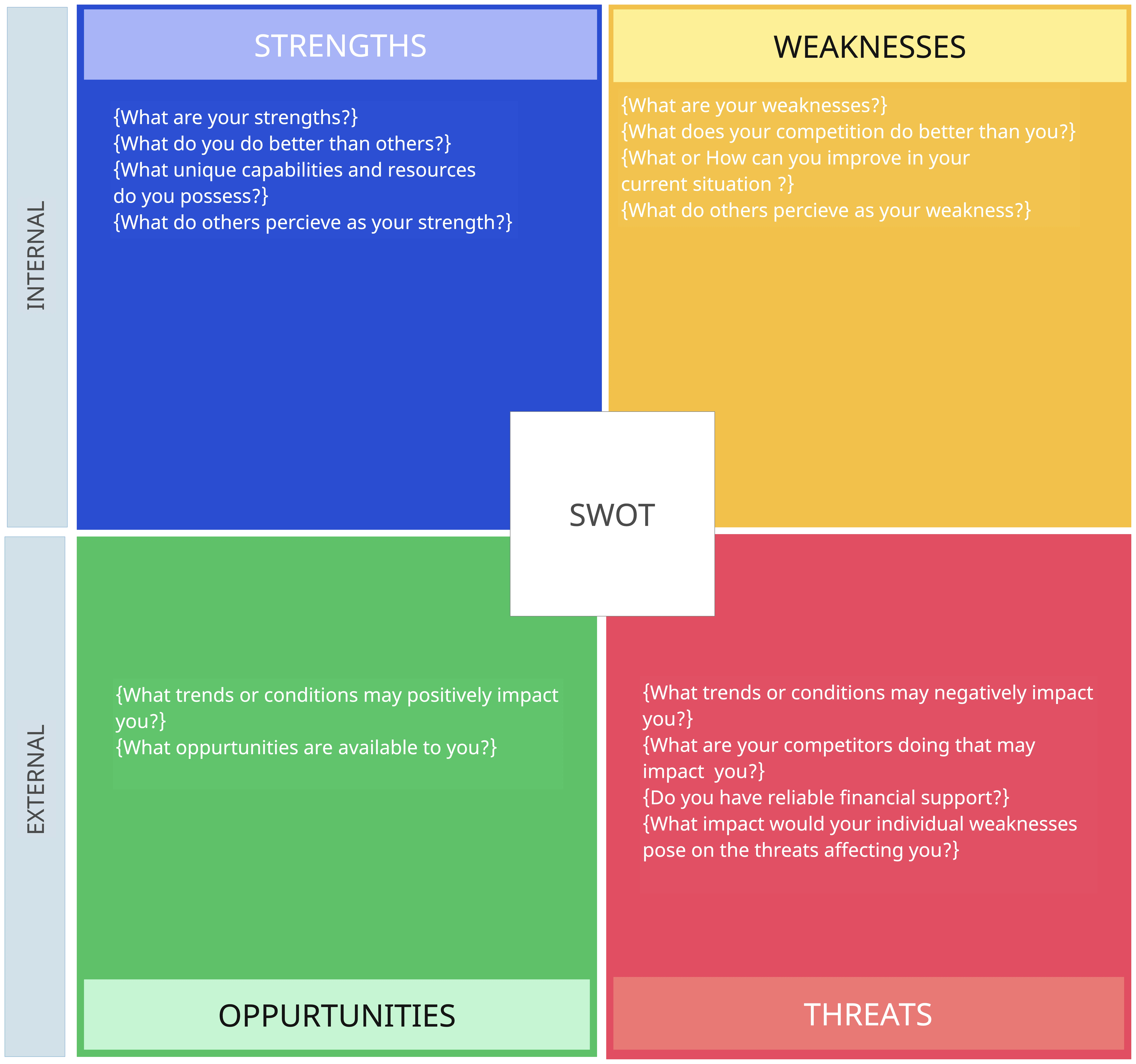
To create a SWOT analysis template for Marketing Plan:
Everything – from what words you use to communicate your message to what marketing channels you use to promote your product – depends on who your customer is.
How old are they? Are they employed? What are their interests? While you need both quantitative and qualitative data on your customers, you can collect them via email surveys, direct interviews, questionnaires, and research.
Using the data you collect, create several user personas based on user segments. You can refer to these whenever you are developing a marketing strategy.
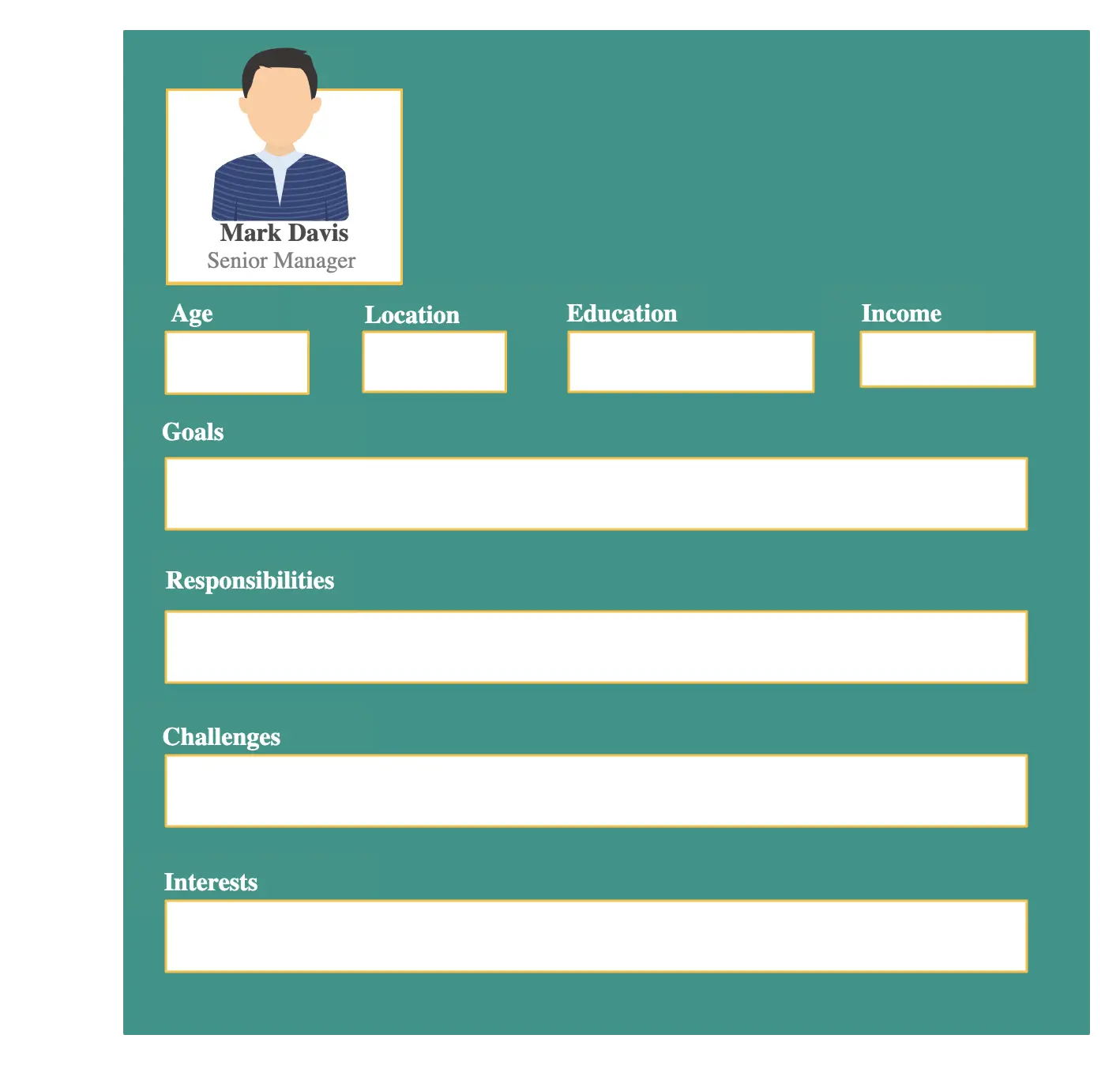
To create a buyer persona template for Marketing Plan:
This is where you identify your top competition, assess their strengths and weaknesses and analyze their marketing strategies in the market. The information you collect can be used to build effective strategies to improve your competitive advantage.
Once you conduct research, gather and analyze data on your competitors, you’d be able to understand whether you are a leader or a follower in the market.
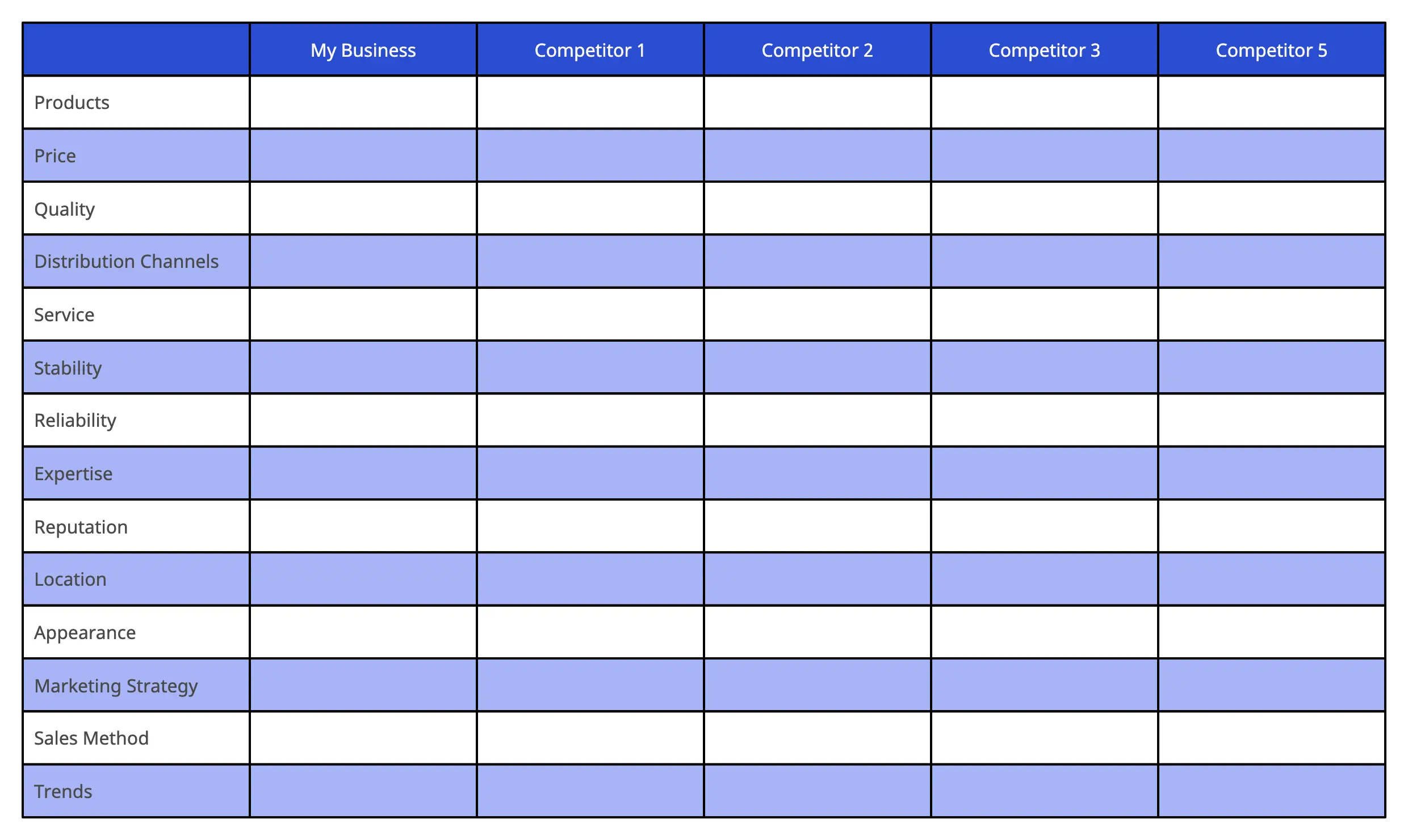
To create a competitor analysis template for Marketing Plan:
Your brand position is how you want your customers to perceive your brand. In order to determine this, you need to
Hence, your brand positioning should resonate with your consumers, can be delivered by you and should be different from that of your competitors. Keep these in mind when you are setting your marketing goals.
Compare your brand with the average brands in the market by scoring each of the following five brand asset categories using a 20-point scale with a maximum possible score of 100. This way you can derive a score that indicates the relative strength of your brand against your competitors.
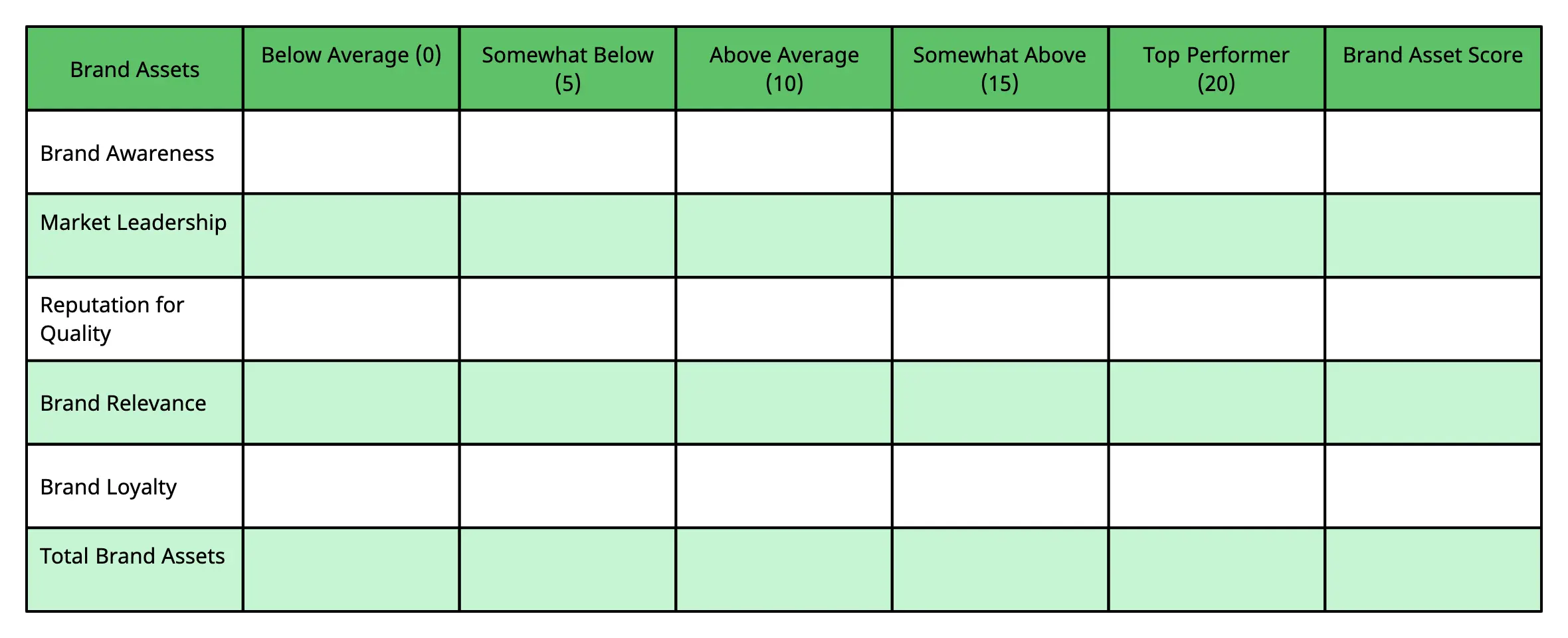
To create a brand asset scorecard template for Marketing Plan:
Now that you know where you stand in the market, it’s time to define your marketing goals. They are the only way to measure the success of the effort your marketing team is putting in.
Based on your current performance and your marketing objectives, your goals might change, but make sure that they align with the SMART goal criteria.
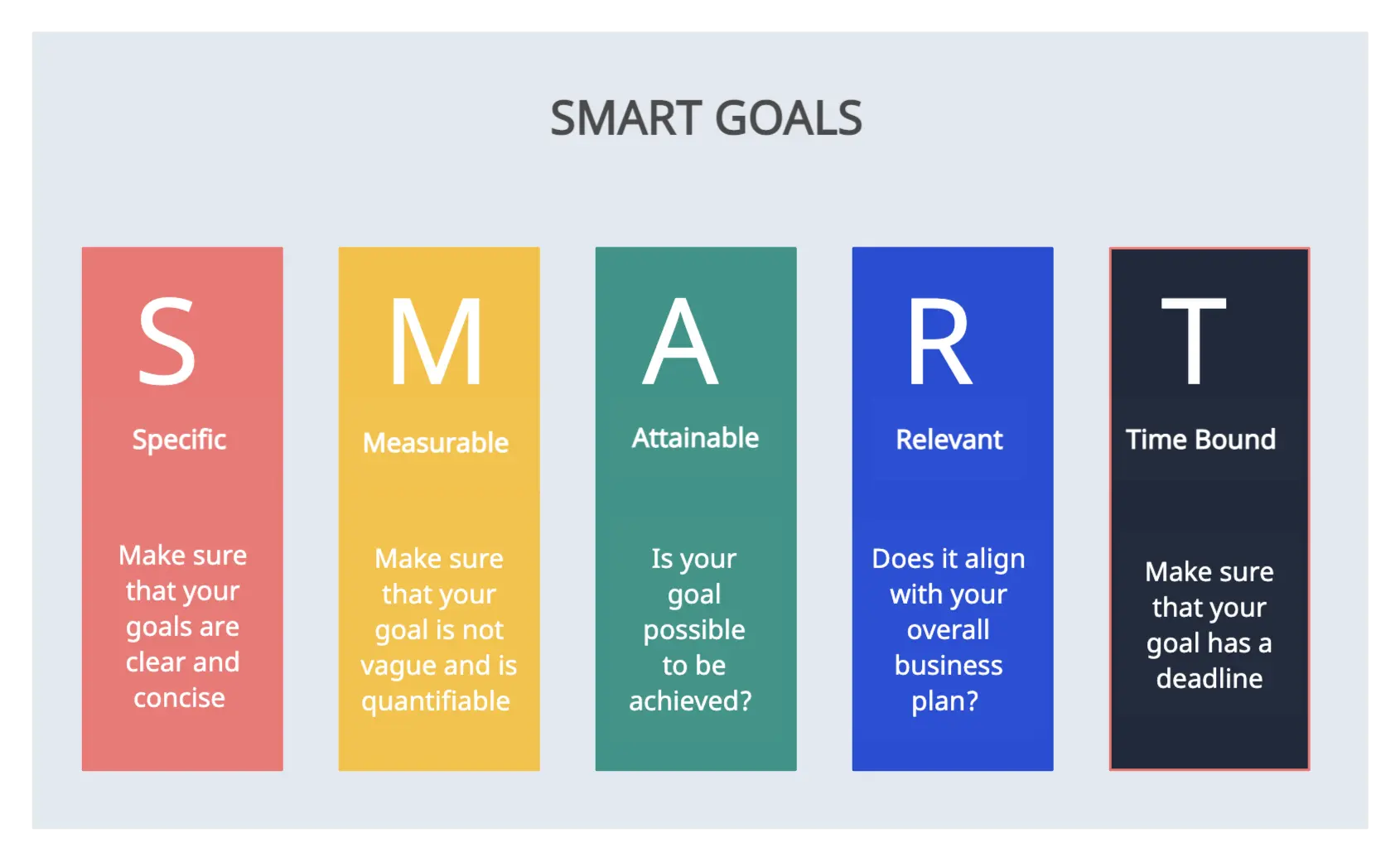
To create a SMART marketing goal template for Marketing Plan:
Once you know the goals you want to achieve, you can easily outline the steps that you need to take to accomplish them.
With a process map or flowchart, you can map the tasks you need to complete in order to achieve each of your goals. Once you’ve diagrammed your strategy, you can share it with your team and analyze whether the process needs to be improved or not.
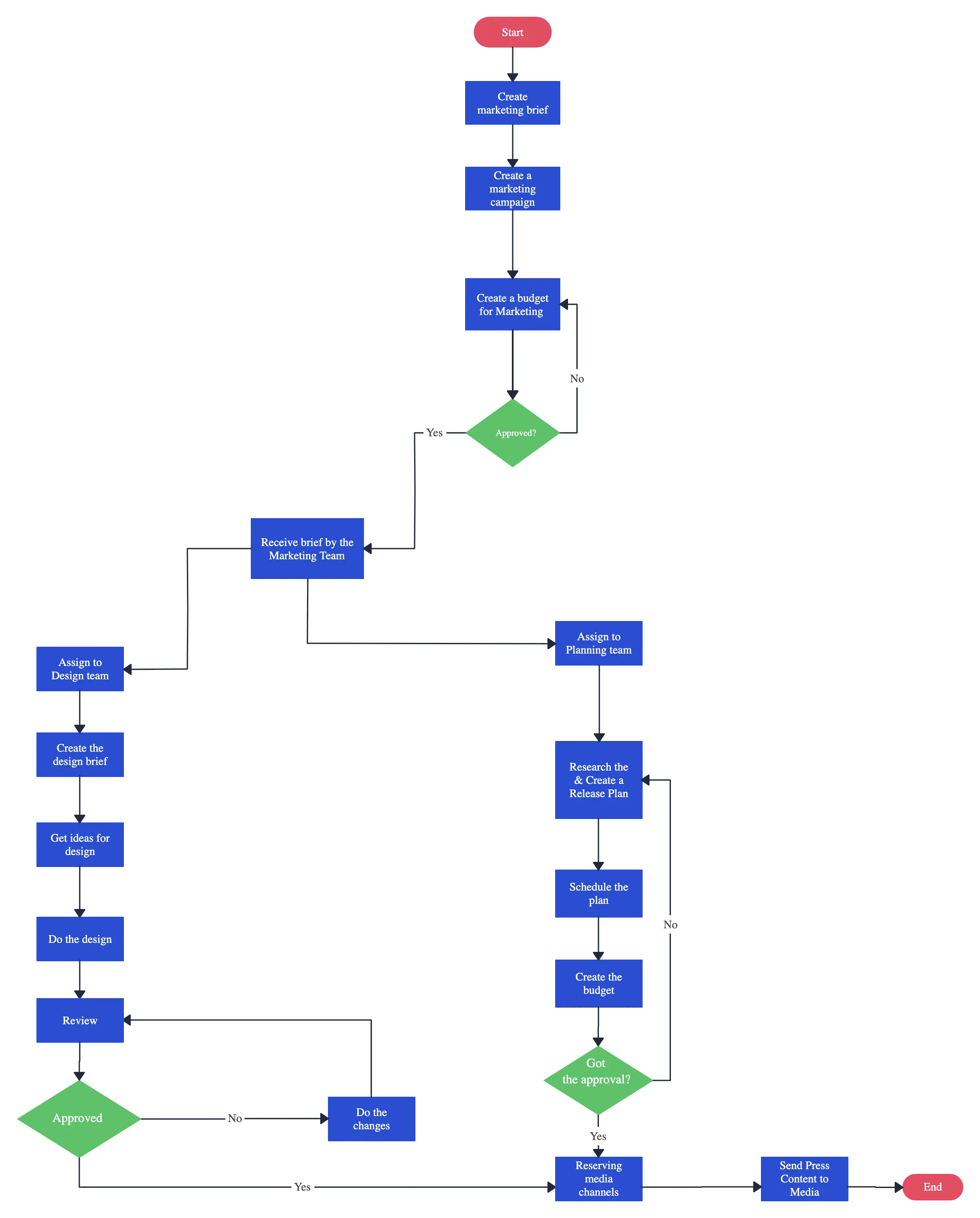
Whether it is to run a social media campaign or to get an ad published in a newspaper, you need to spend money.
Now that you have identified the tasks/ steps you need to take, figure out how much money you’ll have to spend on each activity and where you’d take the money from. Having planned how you spend money earlier will help you keep track of your finances.
Before winding up, let’s also take a look at popular marketing strategies and tactics you can use and implement along with a marketing plan.
Different marketing strategies and tactics may be more effective depending on your industry, target market, and business goals. It’s important to regularly assess the effectiveness of your marketing initiatives, make any necessary adjustments, and monitor results. Here are some examples of marketing strategies and tactics commonly used by businesses.
Target Market Segmentation
Based on demographics, psychographics, or other relevant factors, divide your overall market into smaller, more manageable categories. Customize your marketing messaging and strategies to engage and effectively reach each category.
Content Marketing
To attract and engage your target audience, produce and distribute relevant material, such as blog posts, videos, infographics, or whitepapers. Focus on delivering helpful information, resolving issues, and building your reputation as an industry expert.
Social Media Marketing
Use well-known social media sites like Facebook, Instagram, Twitter, or LinkedIn to promote your goods or services, build brand awareness, and interact with your audience. To achieve your marketing objectives, combine organic posts with sponsored adverts, influencer partnerships, and community engagement.
Search Engine Optimization (SEO)
Increase the visibility of your website and online content by optimizing it. To increase your website’s visibility and organic traffic, conduct keyword research, provide high-quality content, optimize meta tags and descriptions, and develop quality backlinks.
Pay-Per-Click (PPC) Advertising
Run targeted internet advertising where you only pay when someone clicks on them on search engines (like Google advertising) or social media platforms (like Facebook Ads). For your campaigns to be as effective as possible, set specified budgets, target keywords, demographics, or interests, and keep an eye on them.
Email Marketing
Create an email list of prospective or current clients and send them targeted, customized emails. To cultivate leads, promote conversions, and increase customer loyalty, use email newsletters, promotional offers, product updates, or automated drip campaigns.
Influencer Marketing
To promote your business or products, collaborate with influential individuals or popular social media personalities in your industry. These influencers can create content, share reviews, or endorse your offerings, helping you reach their dedicated audience and increase brand awareness.
Referral Programs
You can encourage your current clients to recommend your company to their friends, relatives, or coworkers by providing rewards or incentives. Create referral programs that give discounts, exclusive access, or loyalty points to both the referrer and the new consumer.
Event Marketing
Participate in or organize trade exhibitions, conferences, events, or webinars that are relevant to your field. These events provide opportunities to network, showcase your products, share knowledge, and generate leads.
Personalization and Customer Segmentation
Tailor your marketing messages and offers to individual customers or specific customer segments based on their preferences, behavior, or purchase history. Deliver personalized experiences across numerous channels by utilizing customer data, analytics, and marketing automation tools.
Advanced strategies require a deep understanding of your target audience, extensive data analysis, and ongoing experimentation. To ensure optimal performance and maintain an edge over the competition, it’s critical to regularly assess the outcomes, iterate, and change your methods.
A marketing plan doesn’t necessarily need to contain hundreds of pages. What is important is that it provides your marketing team the roadmap to get started.
Make use of the visualization techniques we looked at when discussing each step to make things clearer to your team.
And don’t forget to share your ideas on how to create a marketing plan with us.
Join over thousands of organizations that use Creately to brainstorm, plan, analyze, and execute their projects successfully.
A marketing plan is a comprehensive document that outlines a business’s marketing goals, strategies, tactics, and action plans. It acts as a road map to direct marketing initiatives and ensures they align with the overarching business goals. Market research, target audience analysis, competitive analysis, marketing objectives, strategies, execution deadlines, and budget allocation are frequently included in marketing plans.
While the components of a marketing plan can vary, here are some common key elements:
To measure and track the effectiveness of a marketing plan, consider the following approaches,
Addressing these challenges requires flexibility, ongoing monitoring, agility, and effective communication within the marketing team and across the organization.
Amanda Athuraliya is the communication specialist/content writer at Creately, online diagramming and collaboration tool. She is an avid reader, a budding writer and a passionate researcher who loves to write about all kinds of topics.
